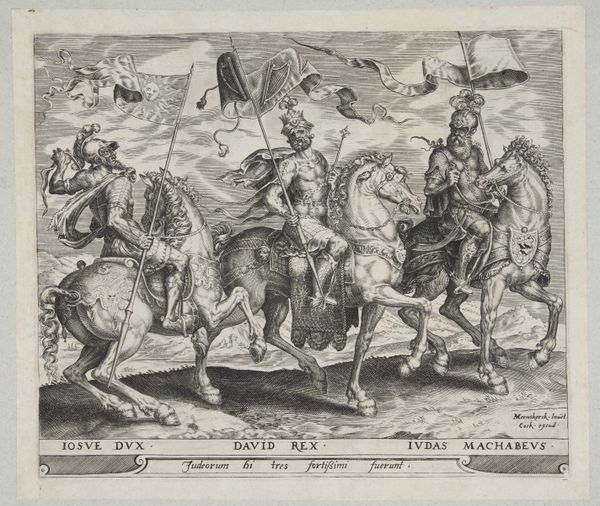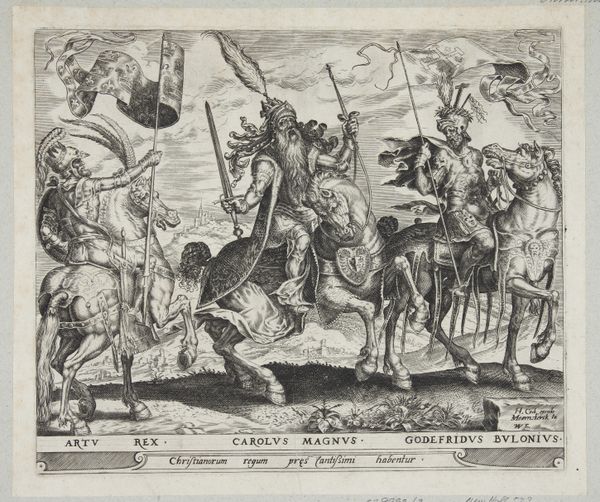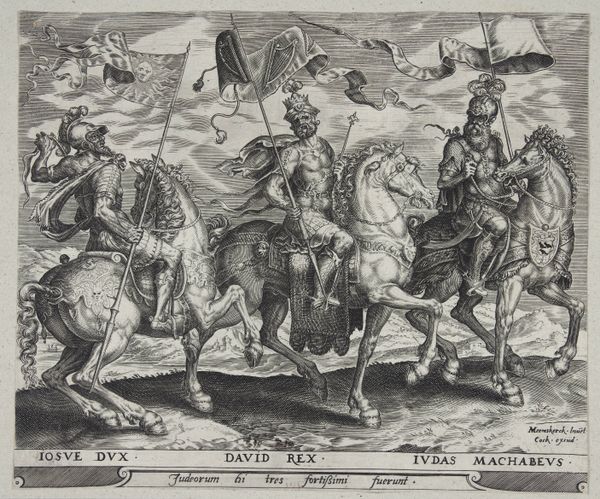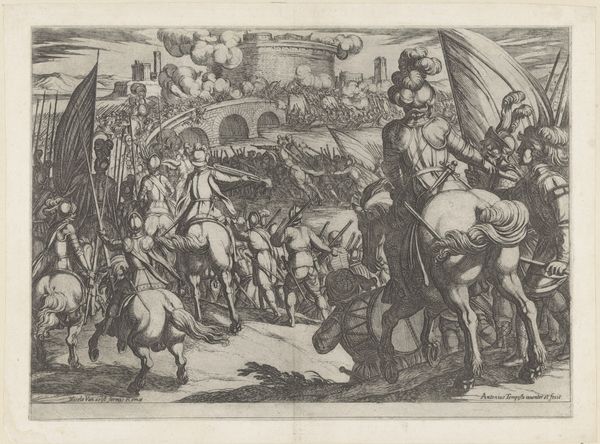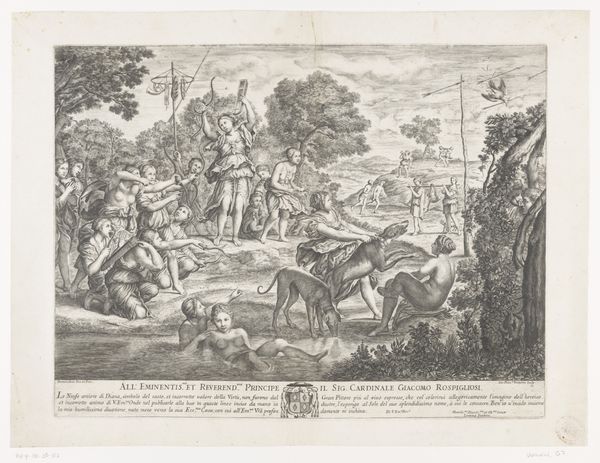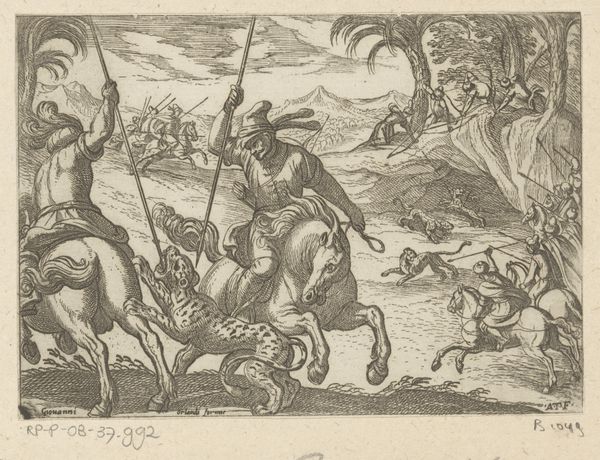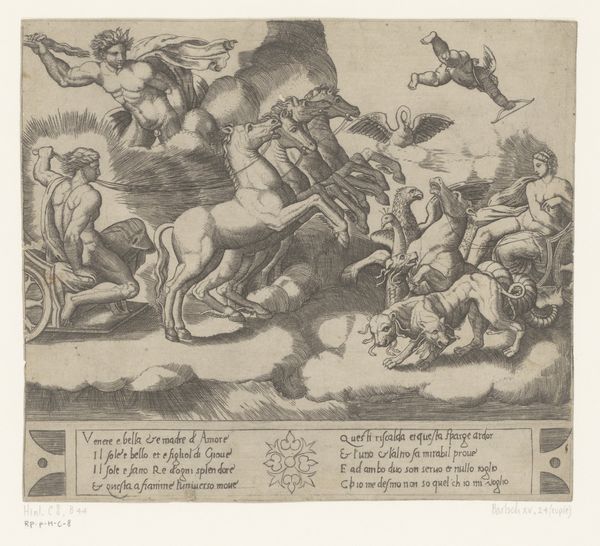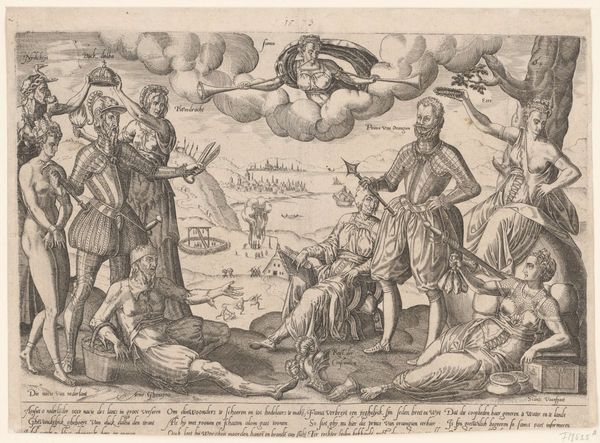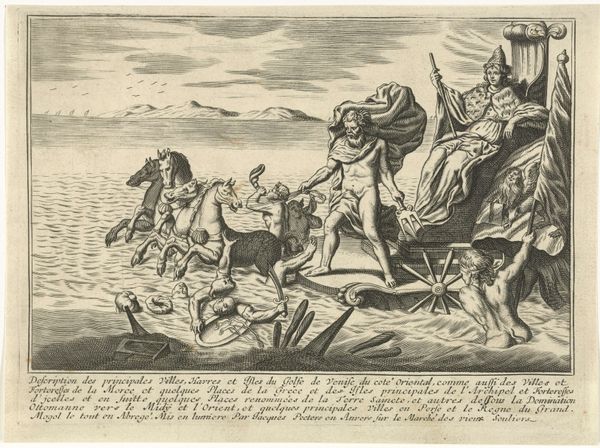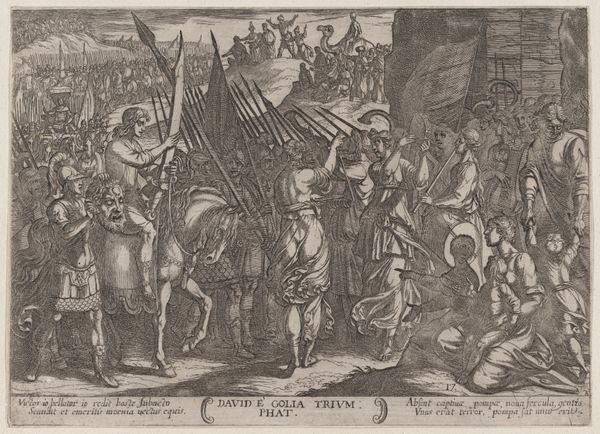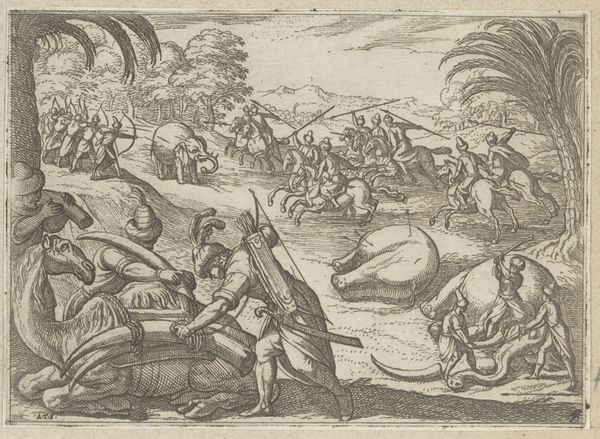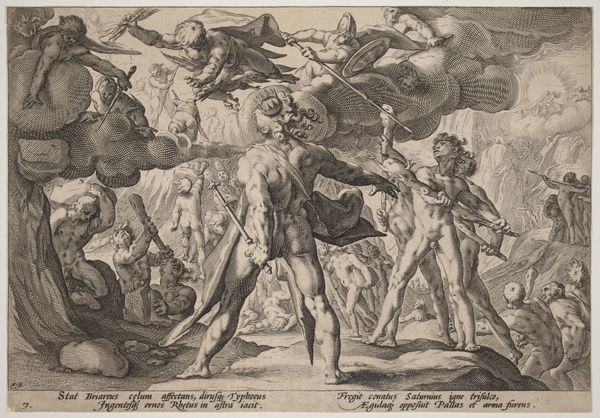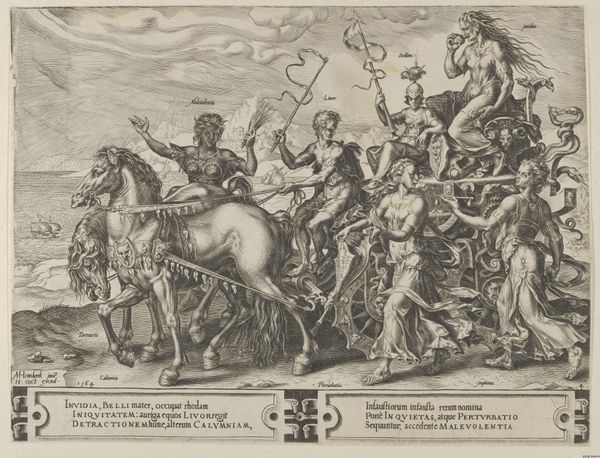
Hector of Troy, Alexander of Macedonia and Julius Cæsar 1565 - 1568
0:00
0:00
print, engraving
#
allegory
# print
#
figuration
#
11_renaissance
#
line
#
history-painting
#
engraving
Dimensions: 236 mm (height) x 274 mm (width) (monteringsmaal), 215 mm (height) x 253 mm (width) (plademaal)
Editor: This engraving from 1565-1568 by Harmen Jansz. Muller, titled "Hector of Troy, Alexander of Macedonia and Julius Caesar," has such a striking visual hierarchy! Alexander, enthroned on the elephant, really dominates the composition. What stands out to you from a formal perspective? Curator: The engraving showcases a meticulous use of line, wouldn't you agree? Consider how line dictates the rendering of musculature, fabric, and even atmospheric effects. Observe, for instance, how denser hatching around Hector's horse gives it visual weight in comparison to the more ethereal sky. The artist’s hand creates depth through varied line weight. Editor: I see that now! It’s almost like he’s sculpting with lines. The three figures are quite close in style, too. Are there many deviations? Curator: The engraving reveals Muller’s approach to creating dynamic movement despite its static medium. Consider the way the flags unfurl or how the bodies of the animals are poised in stride. Where do your eyes travel as you consider the organization? Editor: They trace from left to right – from Hector to Caesar! I'm curious if there’s any intended imbalance from Hector to Caesar? Curator: An interesting consideration. Notice how the background itself—a turbulent sky contrasted with a barren foreground—supports this sense of grand procession. Such a strategic employment of contrast heightens the dynamism embedded within the overall structure. Editor: I can see how the different engraving techniques – the use of hatching and the strategic placement of figures, creates depth. The use of light helps create dimension. Thank you for the close reading! Curator: Precisely. I think through an approach attuned to the formal mechanics, we appreciate not just 'what' is represented, but more importantly 'how' meaning is manufactured.
Comments
No comments
Be the first to comment and join the conversation on the ultimate creative platform.
